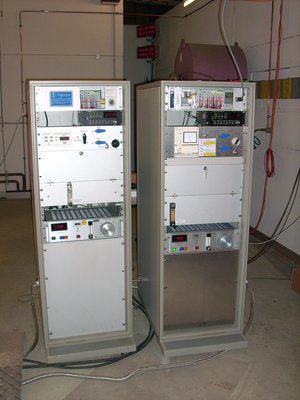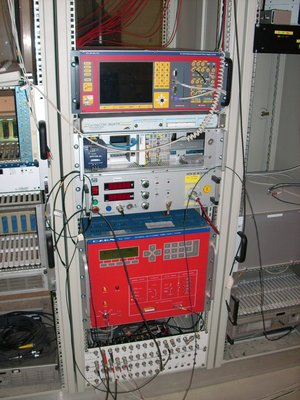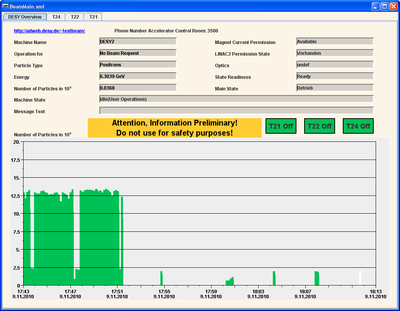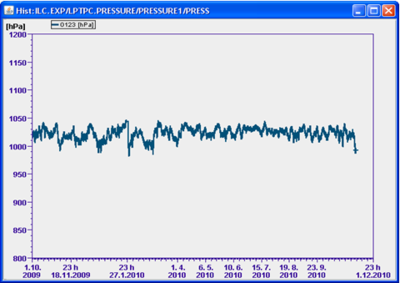Slow Control
For every gaseous detector there is the inherent need of controlling or at least monitoring the conditions of the employed gas and the detector itself. Since composition and physical condition (pressure, temperature) of the gas as well as operational voltages and environmental conditions are changing and affect the operation of the detector, a slow control system was set up at for the TPC prototypes of our group.
Figure 1b:
HV system at the test beam area
In its first version as a gas control system, it is possible to monitor water and oxygen content of the gas (the two main pollutions), pressure, bottle filling state and gas flow. The latter can also be controlled. The system itself (see Figure 1a) is housed in a 19'' rack, including the piping for the gas, such that a relatively flexible operation is possible and the system can be moved to various measuring locations with sufficient ease.
Due to its modular conception the system can be extended to fit future needs. For the Large Prototype TPC of the EUDET project built within the LCTPC collaboration, a second slow control system was built. It was constructed following the experiences gained with the first system. Both systems are constantly being improved and adapted to new needs. The most prominent change since its creation is perhaps the migration towards a new readout scheme based on the Distributed Object Oriented Control System (DOOCS).
The measurements are digitized by an industrial Programmable Logic Control (PLC) and read out by so called DOOCS server programs. Within DOOCS, there are several ways to display and manipulate the data. JDDD is used as data display. As DOOCS became more established, other parts of the LPTPC setup have been integrated into the overall slow control system. The cryogenic system of the PCMAG, magnetic field probes, and an accelerator status display have been added since (see Figure 2a).
In future, a monitoring system for the movable stage of PCMAG (see T24/1 page) and the HV system (see Figure 1b) shall be incorporated. An improved interface to the LPTPC conditions database is in preparation. Based on the low level data collected in the system, higher level routines can be implemented to help providing a smooth operation (e.g. automatic leak checks, consumption estimates, automatic warning sign operation). As the slow control system is or can be closely coupled to many of the other hardware and software systems, the idea emerged to expand it stepwise into a fully fledged run control system.





